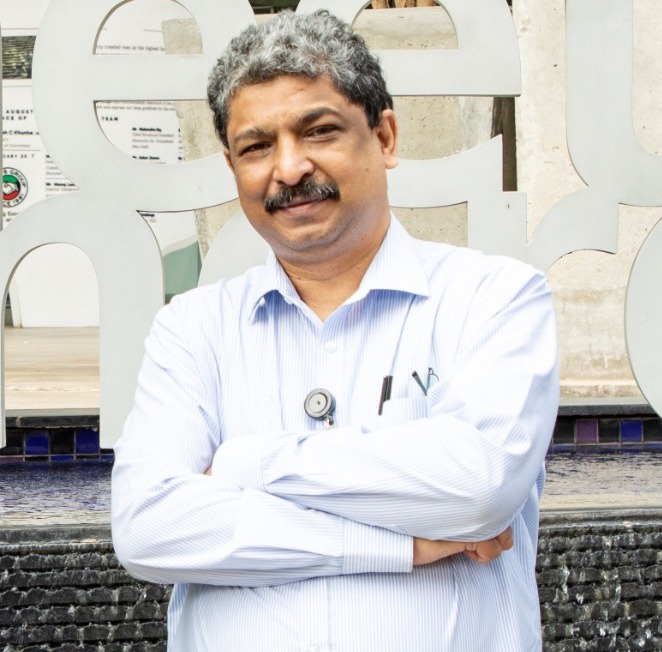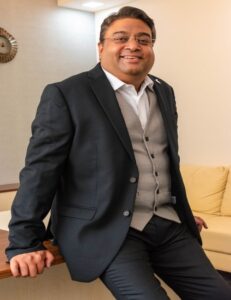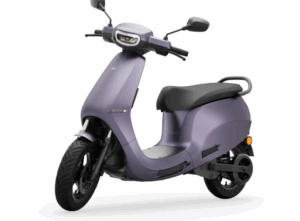Premraj Krishnakutty | Vice President-R&D | Schneider Electric India

Energy Efficiency is the Key to Sustainability and the best way to reduce our Emissions and slow down the climate change and its impacts . We must act NOW “
1. As per the latest IPCC report, climate change has passed a critical point and it would require urgent steps to limit the negative impact. What do you think we should do from a global and Indian context to address the concerns raised by the IPCC report?
Mr. Premraj- The IPCC report presents a grim warning and points to events happening quicker than expected about global warming which is further leading to irreversible changes. Globally, countries need to reach a consensus for Paris COP 21 agreements, accelerate the implementation and strive for aggressive targets. The focus needs to be on the 1.5 Degree centigrade target. In India, we are on target with a 2 Degree commitment, but there is an opportunity to have this as a country-wide movement and build climate-friendly technologies. This is an opportunity for us to reinvent technologies at scale and lead from the forefront. We need to consistently aim towards achieving our targets, focus on digitization, decarbonization and continue to use more renewables and use energy efficiently. There has been greater awareness in the country as well as a spurt in the percentage of renewables and India should continue to work on this. We need to make campaigns focused on educating people regarding the impact and how simple actions that they can take which will further add value to the commitment.
2. The AC and DC war seems to be reigniting again. Do you think the DC holds much brighter future in Power Distribution?
Mr. Premraj-This has been an on-and-off battle from the outset of the usage of the electrical world. It is a fact that many loads are DC-based now more than ever before with the advent of LED lighting and trends paving towards digitization. The same is true with PV generation. I believe that we will be at a point where both will coexist. There are spaces where DC is efficient, like for example in Data Centers, Renewables driven microgrids, where DC will continue to thrive. There is a need to develop cost-effective technologies for the safe and reliable usage of DC in distribution grids and final distribution points. The burgeoning market will drive adoption and the speed of transition or achieving the desired status quo.
3. Indian Power Distribution sector is still having huge a AT&C losses, which government is trying to address with new reforms now with the new electricity amendment act. What do you think will happen to the Indian utilities technically and commercially?
Mr. Premraj-Yes, it is a fact and the figures showcase how it is happening. The government has been bringing policy interventions that could have a significant impact. There have been announcements in empowering Discoms by the outlay for reform-based result-linked power distribution program. The new amendments enabling delicensing of power, ability to select the power retailer for customers will usher in new entrants in this sector, bringing in new investments and greater efficiency and above all greater choice in the hands of the consumer. There have also been several press reports on enabling utilities to sell power directly. These measures will bring in significant digitization, efficiency, and transparency. Hopefully, this will also help customers who will have a choice to get safe and efficient power.
4. The electrical energy prices in India are not competitive compared to many of the western economies. What do you think the government and the industry should do to make it competitive?
Mr. Premraj-The advent of renewables and power purchase agreements has helped companies. I believe that all of us know the significant issues that we have, which is reducing the losses in distribution so there is more efficiency. Regulatory and social issues need to be considered and worked out.
Technologies to enable losses reduction, higher digitization of the grid, smart metering, and better energy efficiency have to be deployed. Flexibility in power sources by increasing the mix of cheaper renewables driven by greater digitization and technologies is a step forward. More efficient peak management and better management of assets with digitization will make peak management effective.
5. How can we improve energy efficiency in agricultural and allied sectors?
Mr. Premraj-A lot of steps have been taken and many states have been incentivized to implement them in the last few years. This has a lot to do with bringing accountability to the system. The incentive to do better utilization is not there, and discoms also are not incentivized to manage better. There has to be better education and understanding of how to incentivize all the stakeholders.
6. What do you think are the major disruptions that could arise due to the India cooling action plan which was unveiled in 2019?
Mr. Premraj-Standardization and better data enables opportunities and helps customers manage energy. Sustainability in cooling is significant as it is one of the main guzzlers of energy. Much like Energy Star programs, this will drive manufacturers to better designs, and better algorithms for energy management.
7. With the IoT Internet of Things playing a major role in many sectors, how do you think IoT can shape up the energy efficiency while being efficient on cost as well?
Mr. Premraj-If you can’t measure it, you can’t manage it. The Internet of Things (IoT) enables that with lower costs as compared to existing technologies in the past. IoT leverages cloud computing and communication with cost-effective hardware. Several industries are leveraging IoT to improve productivity, increasing digitization, empower better customer support and data- based management. This will only improve with better sensors, electronics, and connectivity. This has happened more significantly with cost-efficiency. Schneider Electric’s Ecostruxure Power is focused on this aspect with asset management and efficiency in multiple verticals like business, plant, power, and grid.
8. Recently digitization is accelerating pace this pandemic in the energy distribution a sector. How do you foresee the challenges because of digitization, either cyber security challenges or Skill gap in the market for system integrators?
Mr. Premraj-In a country like India, the use of mobile phones is increasing drastically. On the other hand, the workforce is also digitally aware. Today, organizations need to be ready to invest in the manpower for not only the betterment of their companies but also for the entire country. Cyber security is a big risk and recent incidents have shown that. We have had a lot of speculation about recent events. The culture promoting security practices will need to be developed. At Schneider Electric, we have been educating our channel partners, distributors, system integrators, and electricians. There is work done in cyber certifying systems and services provided to customers to enable this. We must educate our customers on how to make systems cyber-proof in the future and the users must keep updating on the latest patches and have secure practices to manage passwords and authentication.
9. Being one of the top sustainable companies in the world what are the key learning’s from Schneider Electric experience in making a circular economy?
Mr. Premraj-We are still learning and continue to learn about working with our partner customers and supply chain partners in these areas. We have made public commitments on sustainability. We constantly learn from our partners and internal process. Schneider Electric continues to build on the way we build our products, eco-friendly packaging, ensuring products are disposed of properly.
Schneider Electric’s Green Premium products, services, and solutions provide transparent information on materials, environmental impact, and end-of-life instructions. For instance, EcoStruxure Platforms use IoT-enabled tools to help companies efficiently use energy and other natural resources to reduce their environmental impact and minimize their carbon footprint. Additionally, all product components can be reused, refurbished, recycled, or composted when land is filled.
At Schneider Electric, our purpose is to empower all to make the most of our energy and resources, while utilizing technology to bridge progress and sustainability for all. Our mission is to be our customers’ digital partner for Sustainability and Efficiency. Schneider Electric presented its robust climate commitments at the Climate Week in New York (in 2019 & 2020), along with 86 other companies for 1.5°C ambition initiative, to achieve carbon neutrality in its ecosystem in the short term, and decarbonization of its operations and supply chain in the mid and long term.
- Carbon neutral in our operations by 2025.
- Achieving net-zero operational emissions by 2030 as part of validated SBT
- Become carbon neutral and have net-zero emissions in our end-to-end supply chain (including scope 3 upstream & downstream emissions) – by 2040 and 2050 respectively.
- Over the years, Schneider Electric has been associated with global sustainability transformation programs for Renewable Energy (RE100), Energy Productivity (EP100), Circular Economy (CE100), and Electric Vehicle (EV100).
- Schneider Electric is actively reiterating its sustainability commitments on the international stage, joining global coalitions and major climate change events, including G7 Business for Inclusive Growth (B4IG), Climate week and COP 25.
- 15 years, the Group has measured its holistic sustainability performance through a dashboard called Schneider Sustainability Impact (SSI; updated every 3-5 years) and has set specific governance bodies to ensure that sustainability is positioned within every part of the Group’s strategy
- Our recently announced SSI (2021-25), set against the 17 UN SDGs, is our most ambitious one yet, which will deliver on six long-term commitments related to climate, resources, trust, equal opportunities, utilizing all generations, and local communities.
- Schneider Electric publishes its performance against the 6 long term commitments from the SSI every quarter, measuring progress towards its ambitious sustainability commitments.
- The company is working across all the indices of sustainable growth to create a template for businesses which are keen to join the ‘decade of action.’ The key areas are Poverty Eradication through Skill development and energy for livelihood programmes and Job creation, Gender Equality ensuring Diversity, Equity & Inclusion, Wellness, Training and learning and constant growth, Clean Water, Circular Economy, Energy Access, Partnerships and Collaboration for creating an ecosystem of partners to strive for a more sustainable living and future.
10. We have been hearing about green hydrogen as the next big disruption in energy sector but this green hydrogen has to be generated from electricity. How do you think the electrical grid can cope up with green hydrogen generation has envisaged by the policymakers?
Mr. Premraj-People are getting heavily dependent on electricity and this increasing electricity demand is required in improving people’s standard of living. Every Technology has an S curve and green hydrogen energy efficient generation will happen in time. With this, there must be a shift from fossil-based technology. Hydrogen has more energy-packed per unit volume than other fuels. For instance, it can be a good choice in aviation and transportation. People are ready to adapt to emerging technologies that are smart and energy efficient. The electrical grid will evolve, and technologies evolve to do more with same infrastructure. Technologies to manage energy better, energy efficiency will help better grid utilization and Schneider Electric will continue to bolster the digitization and core electrical technologies.
11. How is Schneider electric planning to accelerate its digitization journey and help Indian utilities?
Mr. Premraj-Schneider Electric is accelerating the digital transformation through its various processes and actions:
● World’s most sustainable company going further, faster: 2021 started with a flourish as Schneider Electric has become the most sustainable corporation in Corporate Knights ranking. It also marks the debut of our accelerated sustainability programme for 2025 with six commitments for sustainable business, planet and people.
● Electricity 4.0 for smart energy – Electrification, DeCarbonization: A more electric and digital world is key to addressing the climate crisis. Together with our customers, we are building the New Electric World by providing smart energy everywhere in our Homes, Buildings, Data Centres, Industries, Infrastructure, and Grids. We are uniquely positioned to join the dots between them all for a future that becomes more sustainable, more resilient, and more efficient.
● Electricity makes energy green: Proven to be 3-5x more efficient than other sources, Electricity is the most efficient energy; it is also the best vector for decarbonisation. By 2040, the share of electricity in everything we do will double, reaching at least 40% of final energy consumption; and six times more electricity will be generated from solar and wind.
● Digital innovation makes energy smart: With digital innovation, the invisible becomes visible, eliminating waste and driving efficiency. Digital technology such as metering and monitoring enables us to see how we are using our energy. Adding to this with smart devices, apps, analytics, and software goes a step further and enables us to deploy smart energy more efficiently, meaning we can address a huge amount of untapped potential for energy savings.
● We build the New Electric World everywhere: With our products, systems, software, and services, we aim to deploy Electricity 4.0 in Homes, Buildings, Data Centres, Industries, Infrastructure, and Grids for a more sustainable, resilient, and efficient future.
● Helping our customers on their journey to net-zero: Schneider Electric is accelerating the pace at which we can all address climate change through agile digital innovation. We boost Innovation in our core whilst expanding in digital, end to end on all stages of the lifecycle.
13. Many in the industry believe that energy efficiency requires a lot of investment but there could be some low-hanging as the fruits to improve energy efficiency. Could you suggest what could be those which are around us but we may be ignoring that can help us improve energy efficiency?
Mr. Premraj-There are a lot of energy efficiency tools that consumers are aware of and are implementing it in their lives. It is crucial to understand the importance of electricity as a precious resource and then change habits accordingly. The first thing is to opt for more energy efficient devices like LEDs, Energy Star devices, microwaves, lighting management. Energy efficient devices will help in second process of action i.e, maintenance cycle. The third point is better installation practices.Schneider Electric’s EcoStruxure Power digitizes and simplifies electrical distribution systems. With cyber-resilient, connected power distribution solutions, facility operations teams receive actionable data to aid their decisions that help protect people, safeguard assets and maximize business continuity and performance.







